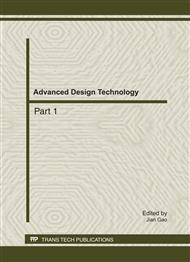p.980
p.987
p.994
p.1000
p.1004
p.1008
p.1012
p.1016
p.1023
New Method for Blank Expansion of Rectangular Box
Abstract:
The principle of NC incremental sheet metal forming as well as the process planning, experiment of the square conical box forming are presented. Because the deformation of sheet metal only occurs around the tool head and the deformed region is subjected to stretch deformation and thins, and surface area increases. Sheet metal forming stepwise is to lead to the whole sheet metal deformation. The sine law indicates that the thickness of the square conical box wall is close to zero when the half-apex angle of the square conical box wall is close to zero. Therefore, we must know the forming limit half-apex angle to ensure that the forming can be carried out successfully, i.e., to ensure that the deformed region with a certain thickness will not fracture. It will succeed in square conical box incremental forming in a single tool-path if the forming is carried out with an angle which is larger than the forming limit half-apex angle. The fracture in the forming component can be avoided by these methods. A square conical box of uniform wall-thickness can be formed by NC incremental forming process. The thickness of deformation area is increased by increasing half-apex angle. The wrinkle in the forming component can be avoided by these methods.
Info:
Periodical:
Pages:
1004-1007
Citation:
Online since:
August 2011
Authors:
Keywords:
Price:
Сopyright:
© 2011 Trans Tech Publications Ltd. All Rights Reserved
Share:
Citation:


